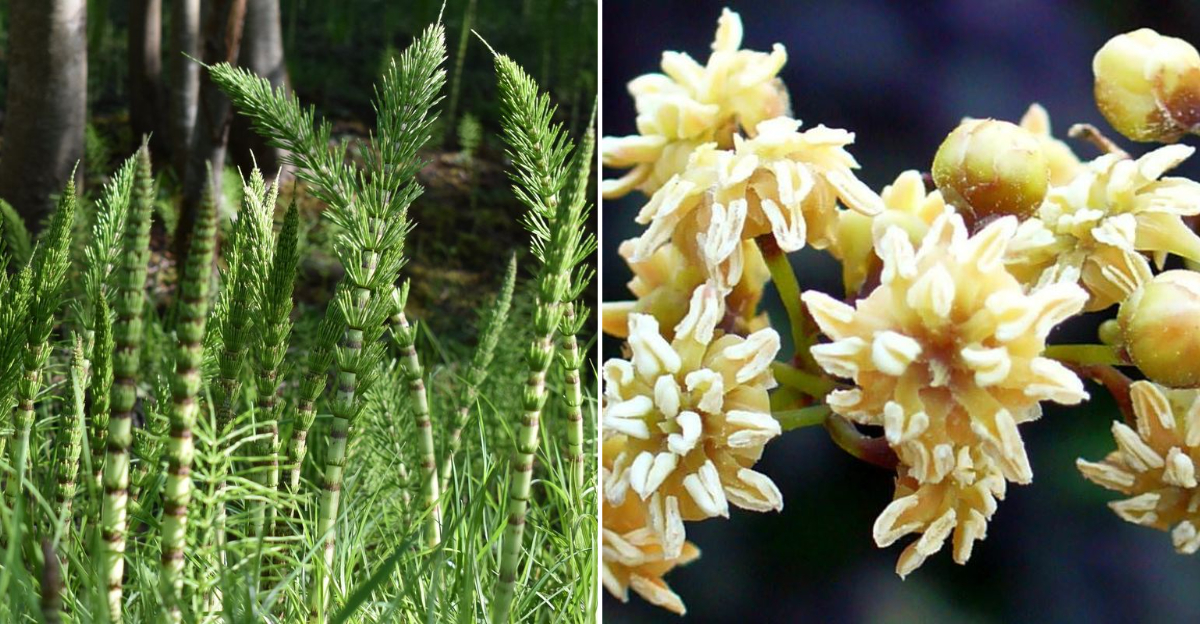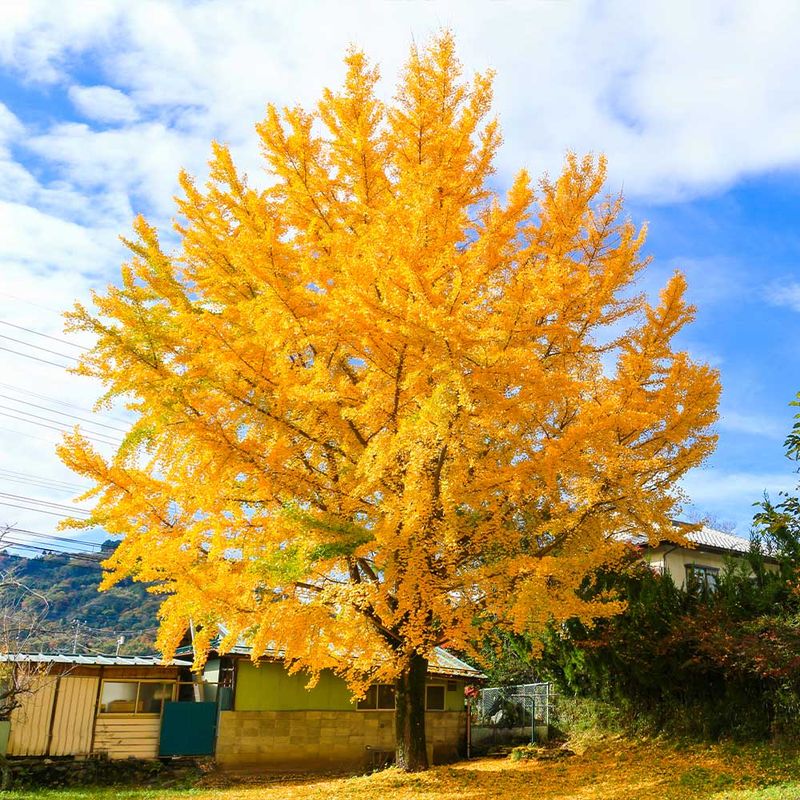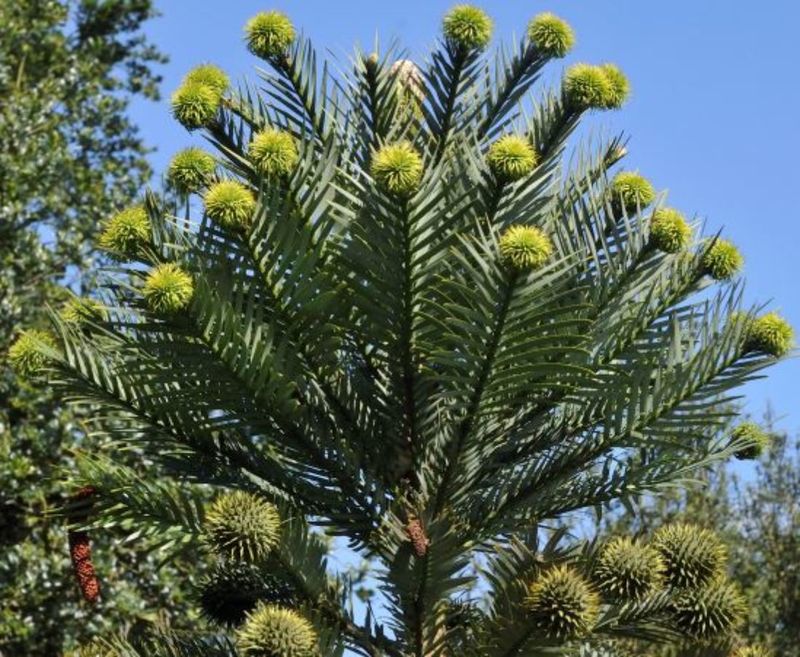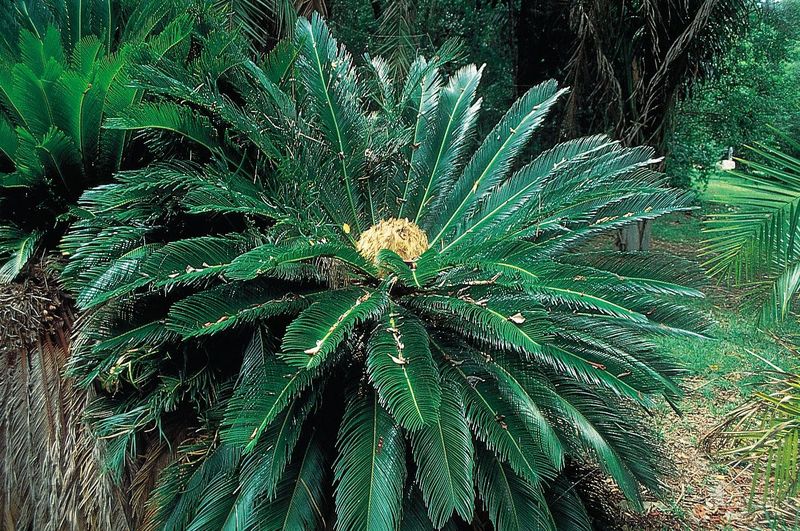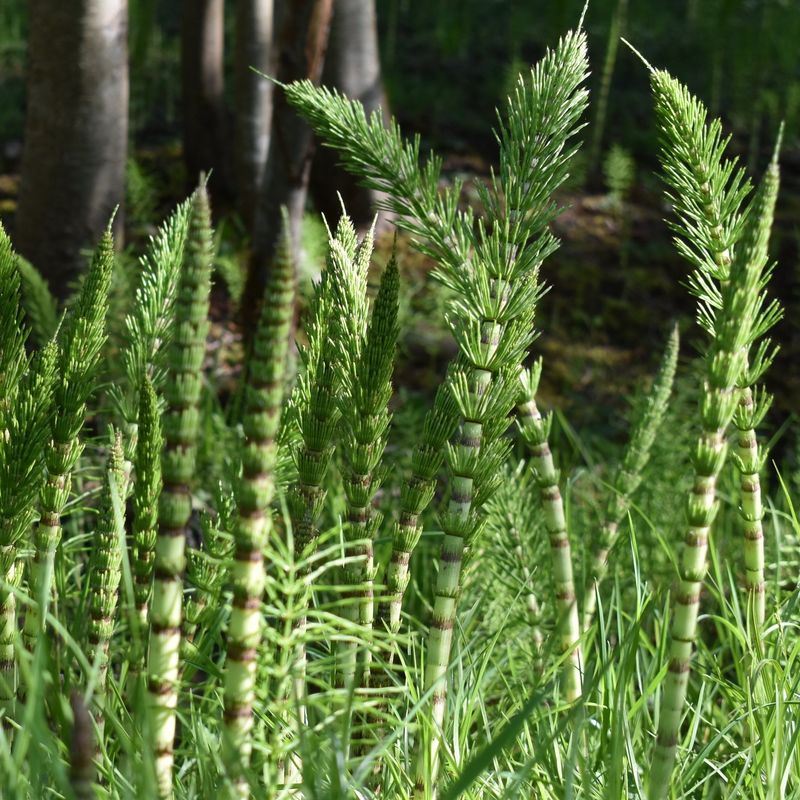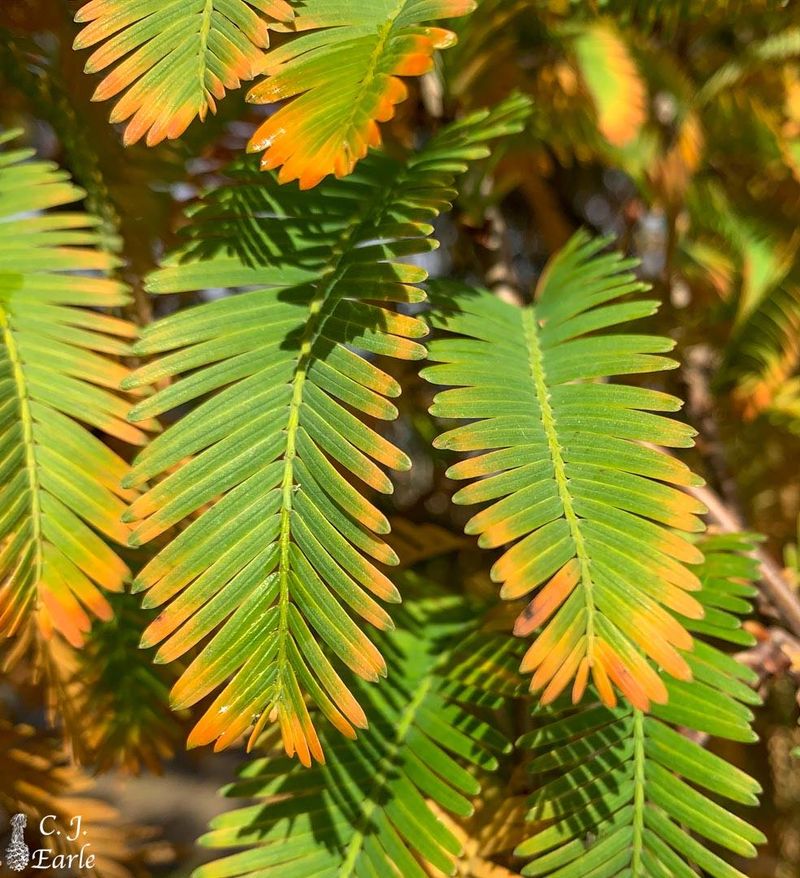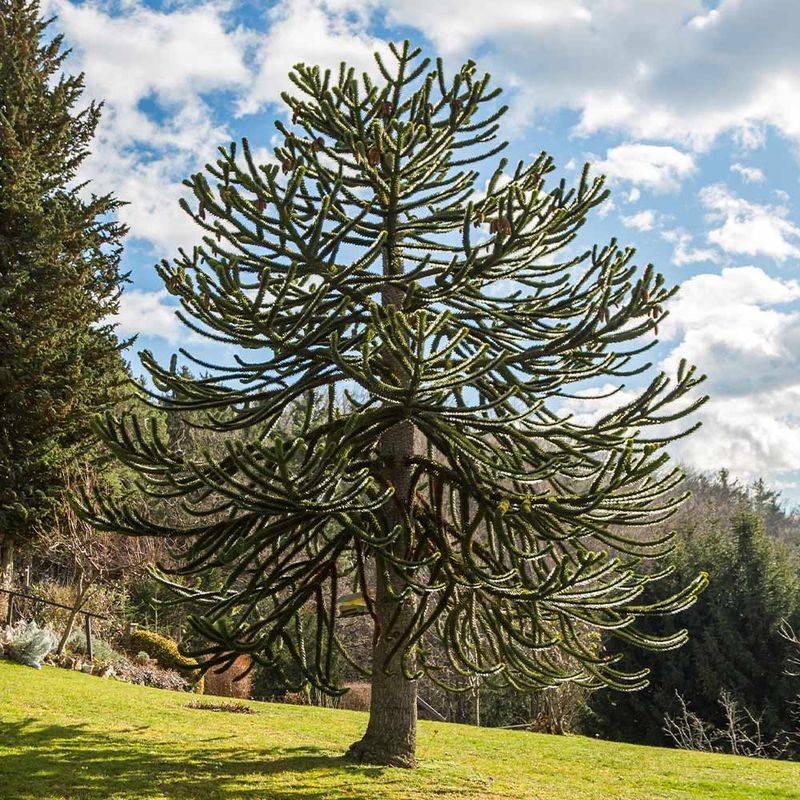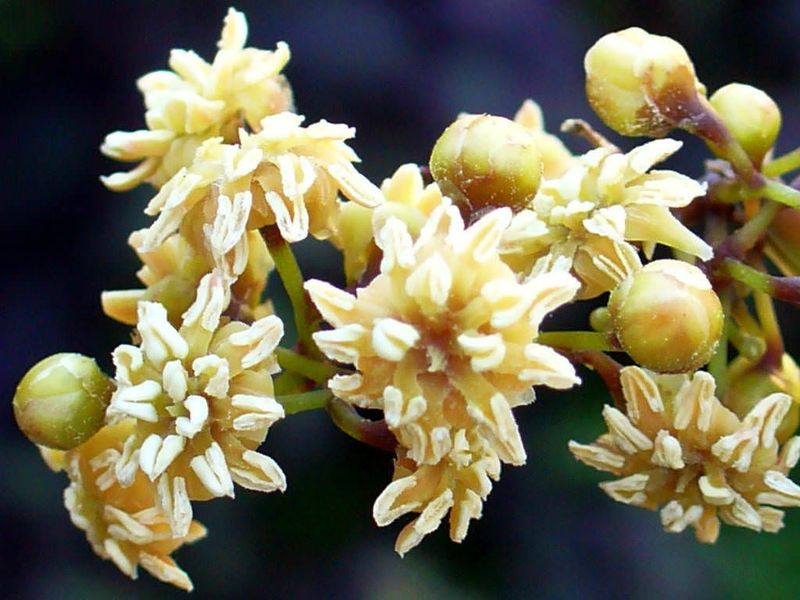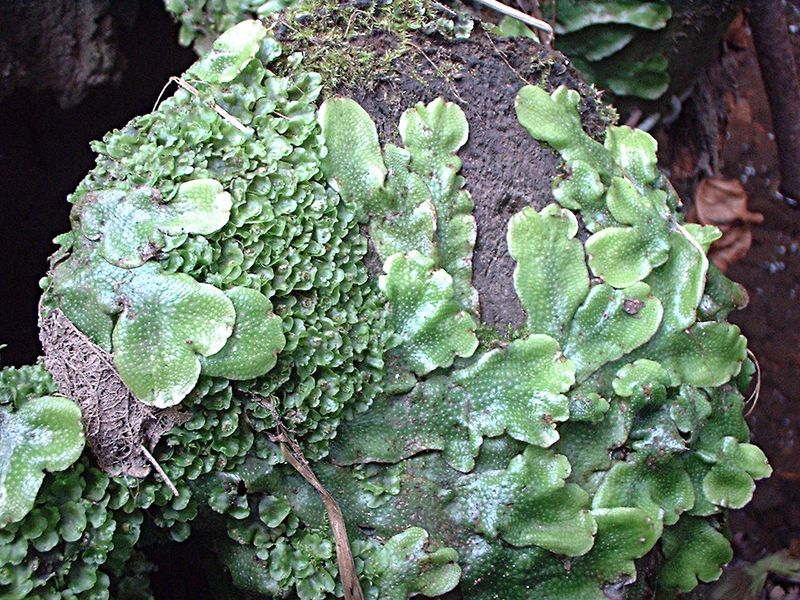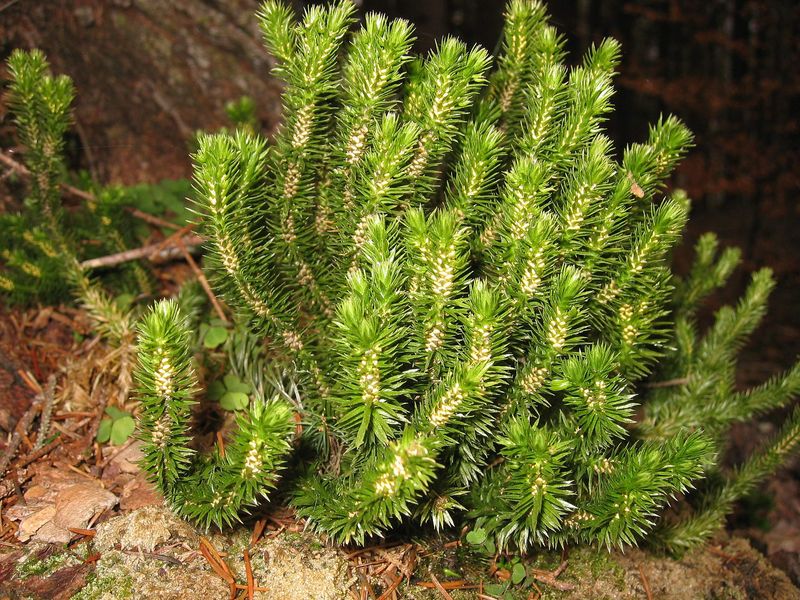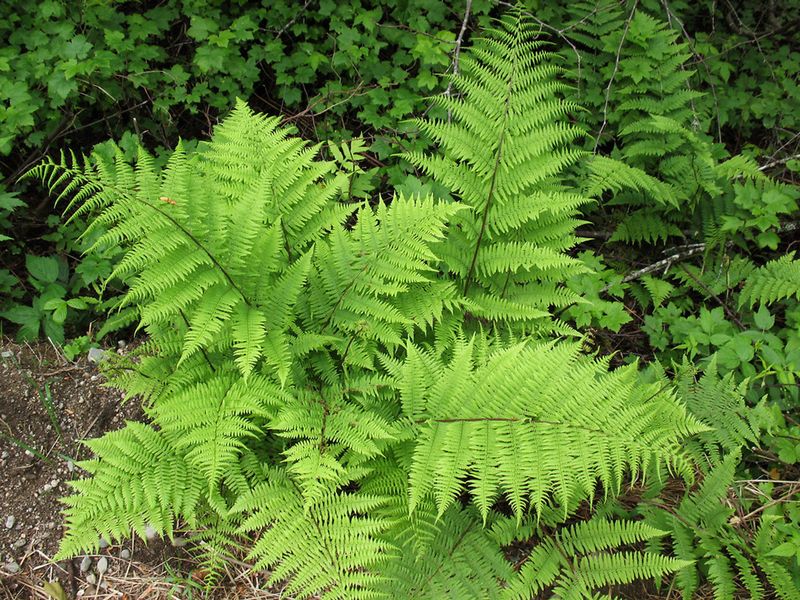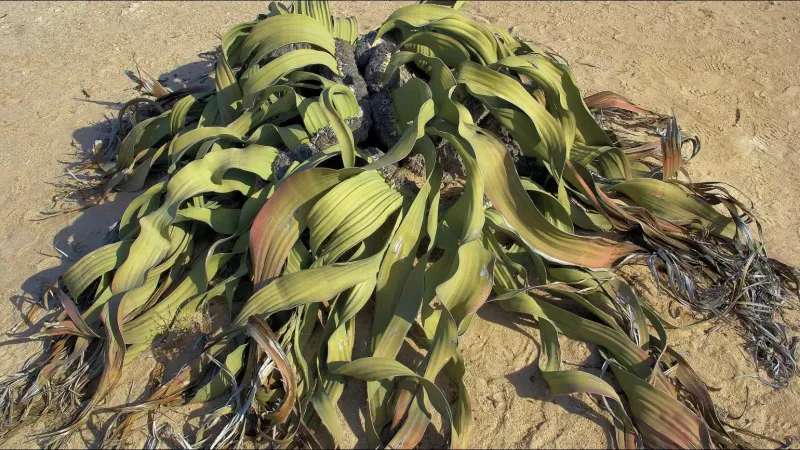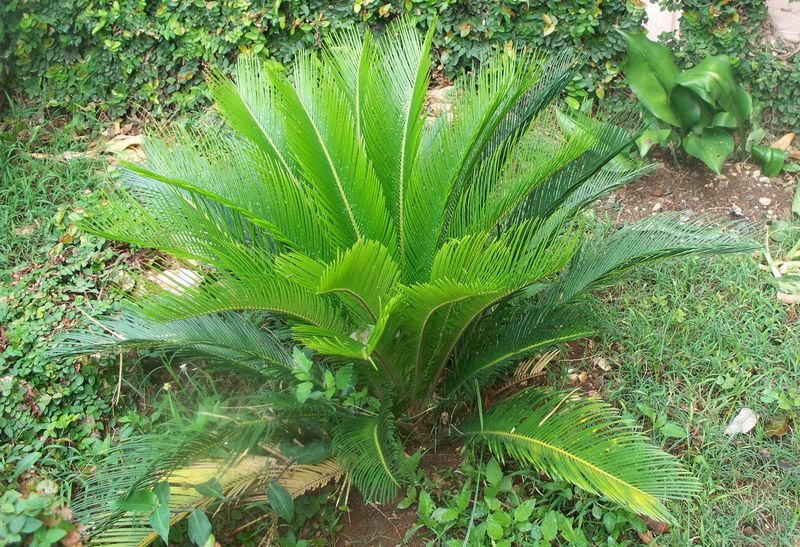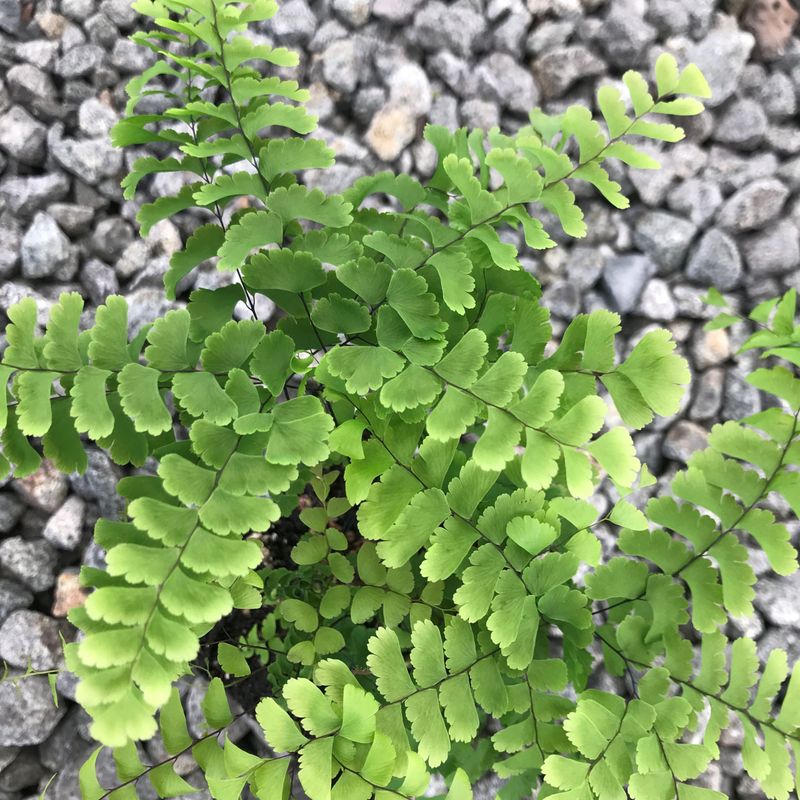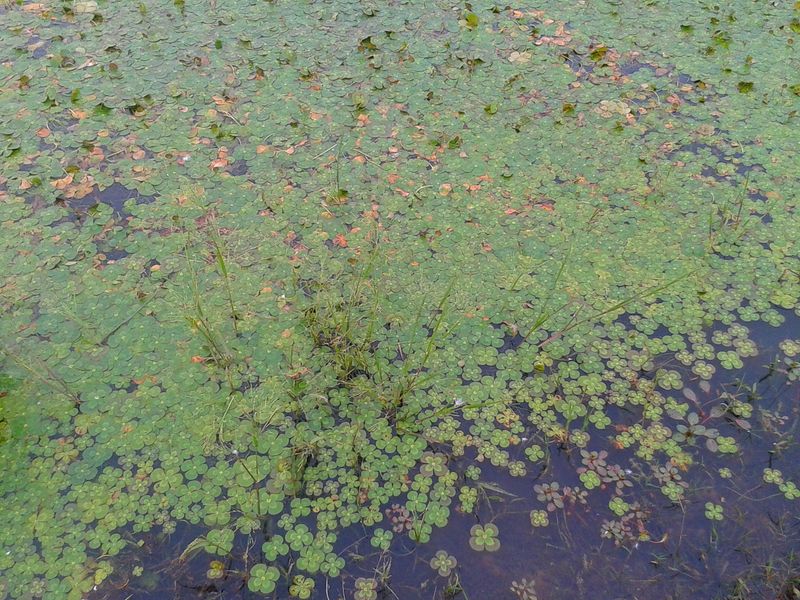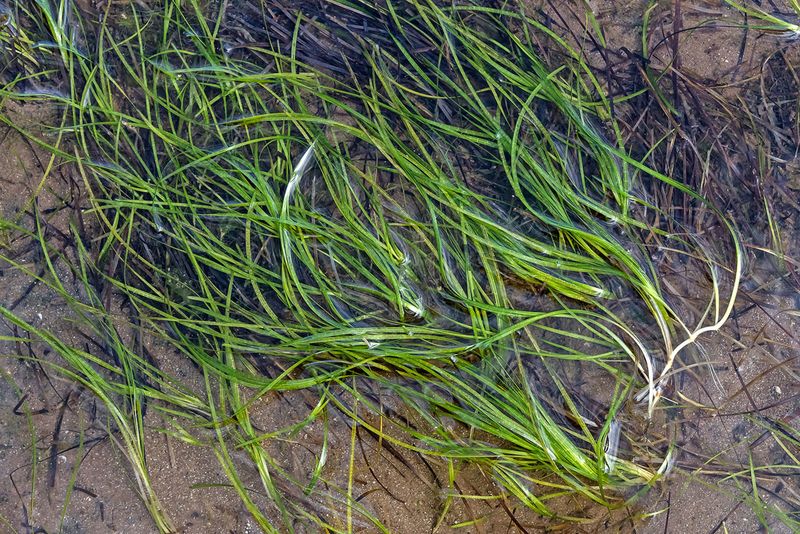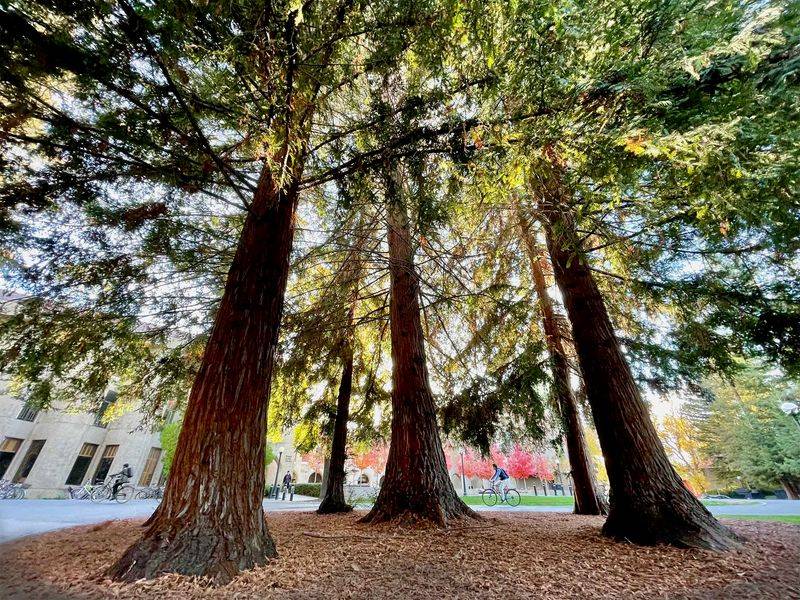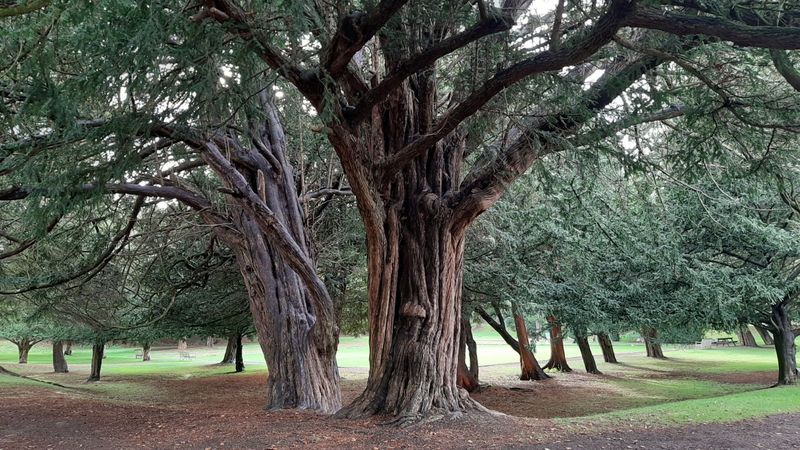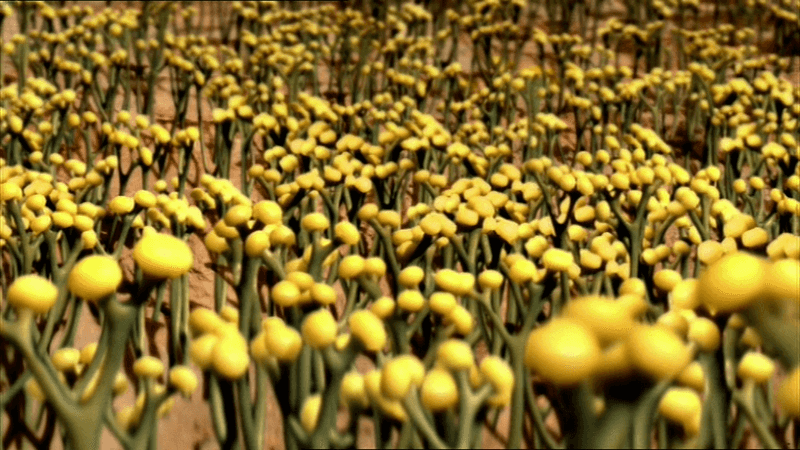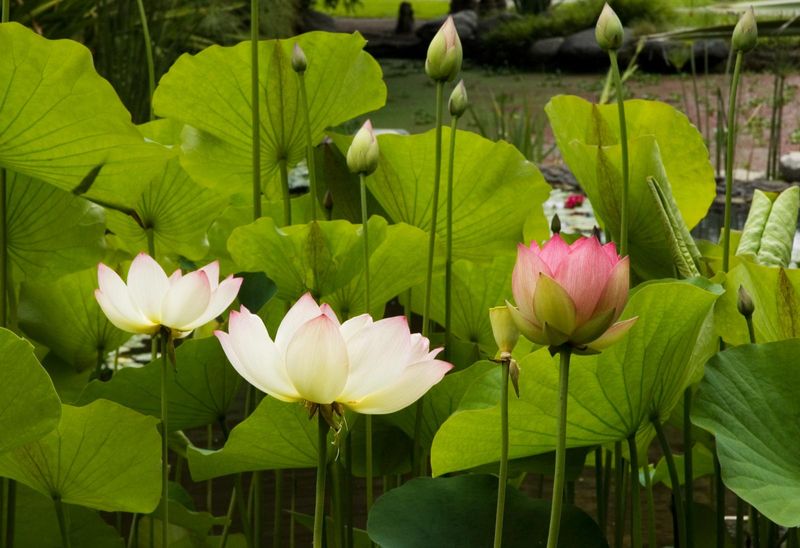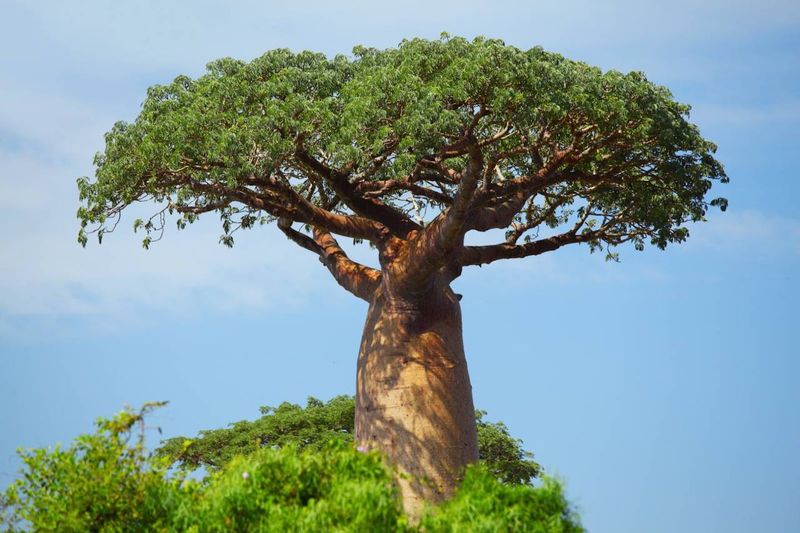Explore a captivating journey through time as we delve into the world of ancient plants. These remarkable species have withstood the test of millions of years, retaining their primordial forms amidst ever-changing environments.
Discover the fascinating stories of resilience and adaptation that have allowed these botanical marvels to persist through eras of geological and climatic upheaval.
1. Ginkgo (Ginkgo biloba)
The Ginkgo biloba, often referred to as a “living fossil,” has remained virtually unchanged for over 200 million years. This tenacious tree species has witnessed the rise and fall of dinosaurs and has adapted to survive in modern urban environments.
Its unique fan-shaped leaves turn a stunning gold in autumn, captivating those who wander beneath its branches. The Ginkgo’s resilience lies in its ability to withstand pollution and disease, making it a popular choice for city planting. Its unwavering endurance and beauty make it a symbol of longevity and perseverance across cultures.
2. Wollemia Pine (Wollemia nobilis)
Discovered in 1994, the Wollemia Pine was once thought extinct for millions of years. This remarkable tree, dating back 90 million years, was found in a secluded Australian canyon.
Its discovery was akin to finding a dinosaur alive, sparking worldwide botanical interest. The Wollemia’s spongy, bubbly bark and needle-like foliage distinguish it from any other tree.
Now grown in botanical gardens globally, it serves as a conservation icon. Protecting this ancient species is crucial, as it represents a direct link to the prehistoric world, offering insights into ancient plant evolution.
3. Cycads
Cycads have thrived for over 300 million years, predating the dinosaurs. Their thick trunks and crown of stiff, palm-like leaves are reminiscent of a bygone era when they dominated the landscape.
These ancient gymnosperms are incredibly hardy, some living for over a thousand years. Often mistaken for palms, cycads are actually more closely related to conifers.
They host unique symbiotic relationships with specialized insects, ensuring pollination. Cycads face threats from habitat destruction and illegal collection, making conservation efforts essential to preserve these living pieces of natural history for future generations.
4. Horsetail (Equisetum spp.)
Horsetail plants have been around for over 350 million years, dating back to when giant versions thrived in prehistoric swamps. These reed-like plants are recognized by their jointed stems and rich green color.
Once towering giants, today’s horsetails are modest in height but still maintain their ancient charm. They grow in moist, sandy soils, often near streams and wetlands.
Horsetails are used in herbal medicine for their diuretic properties. Their resilience and unique silica-rich structure make them fascinating survivors from a time long before the modern landscapes we know today.
5. Dawn Redwood (Metasequoia glyptostroboides)
The Dawn Redwood, thought extinct until its rediscovery in China during the 1940s, hails from over 50 million years ago. This deciduous conifer sheds its needles in winter, unlike most other conifers.
Its striking pyramidal shape and feathery foliage offer a glimpse into ancient forest ecosystems. Once part of vast temperate forests, the Dawn Redwood now captivates with its seasonal beauty in gardens worldwide.
Efforts to conserve and propagate this tree have been successful, ensuring that this ancient species continues to thrive, connecting us to the rich botanical diversity of the prehistoric past.
6. Monkey Puzzle Tree (Araucaria araucana)
The Monkey Puzzle Tree, native to South America, dates back to the Jurassic period, over 200 million years ago. Its name comes from the challenge its spiky branches pose to monkeys trying to climb it.
This evergreen conifer is known for its distinctive, spiraled branches and stiff, scale-like leaves. It can live for over a thousand years, offering shelter and food to various wildlife.
With its remarkable appearance and ancient lineage, the Monkey Puzzle Tree is a popular ornamental tree in gardens. Its conservation helps protect a direct link to the plant life of the dinosaurs.
7. Amborella (Amborella trichopoda)
Amborella, found only in New Caledonia, is considered the closest living relative to the first flowering plants. This unique species has existed for approximately 130 million years.
Its simple, small flowers lack petals, reflecting an early stage of flower evolution. Amborella thrives in the humid, forested habitats of its island home.
Botanists study Amborella for insights into the evolution of flowering plants. Its genetic makeup holds clues to the diversification of angiosperms. Protecting its habitat ensures the survival of this living link to the botanical origins of flowering plants.
8. Liverworts
Liverworts are among the oldest land plants, with a history spanning over 470 million years. These simple, non-vascular plants often grow in damp environments, forming green carpets on rocks and soil.
Their flat, leaf-like structures are adapted for life in moist conditions, where they absorb water and nutrients directly. Liverworts contribute to soil formation and are used in studying plant evolution.
Despite their small size, liverworts play a vital role in ecosystems, providing habitat and food for various microorganisms. Their persistence highlights the endurance of life in the face of changing climates.
9. Clubmosses (Lycopodiophyta)
Clubmosses date back over 400 million years and were once giant trees in prehistoric forests. Today, they are small, ground-hugging plants that still resemble their ancient ancestors.
These vascular plants have simple, scale-like leaves and reproduce via spores. They thrive in shaded, forested areas, often forming lush mats on the forest floor.
Clubmosses are important for their role in the carbon cycle and as indicators of ecological health. Preserving their habitats helps maintain biodiversity and supports the delicate balance of forest ecosystems.
10. Ferns
Ferns have been around for over 360 million years, retaining their graceful, arching fronds through eons of change. These non-flowering, vascular plants reproduce via spores and thrive in moist, shaded environments.
Their fronds, with intricate patterns and delicate textures, add beauty to forest understories and gardens. Ferns are ecological pioneers, colonizing barren areas and contributing to soil health.
They play a crucial role in the ecosystem by providing habitat and food for countless species. Ferns symbolize resilience and adaptability in the ever-evolving tapestry of plant life on Earth.
11. Welwitschia (Welwitschia mirabilis)
Welwitschia is a peculiar plant found only in the Namib Desert, capable of living for over 1,500 years. It produces just two leaves that grow continuously, sometimes reaching lengths of several meters.
Adapted to harsh desert conditions, Welwitschia obtains moisture from fog and occasional rain. Its thick, woody trunk supports the long leaves that sprawl across the desert floor.
The plant’s resilience in one of the world’s most inhospitable environments makes it a subject of scientific intrigue. Welwitschia’s unique biology offers insights into plant survival strategies under extreme conditions.
12. Sago Palm (Cycas revoluta)
The Sago Palm, a member of the cycad family, has remained nearly unchanged for over 200 million years. Its thick, woody trunk and crown of stiff, feather-like leaves evoke images of prehistoric landscapes.
Often mistaken for a true palm, the Sago Palm is actually more closely related to conifers. It thrives in subtropical climates and is a popular ornamental plant.
Despite its ancient lineage, the Sago Palm faces threats from habitat loss and over-collection. Efforts to conserve these living relics ensure their continued presence as symbols of the Earth’s rich botanical heritage.
13. Maidenhair Fern (Adiantum spp.)
Maidenhair Ferns have graced the Earth for over 300 million years, thriving in humid, shaded environments. Their delicate, fan-shaped leaves are a testament to the elegance of ancient plant life.
These ferns are often found in damp forests, where they add a touch of grace to the understory. They are popular in gardens and as houseplants due to their ornamental appeal.
Maidenhair Ferns symbolize endurance and beauty, offering a living connection to the lush landscapes of the past. Their presence enhances biodiversity and supports various wildlife in their natural habitats.
14. Water Clover (Marsilea spp.)
Water Clover, an ancient aquatic fern, dates back 250 million years. Its four-leaved, clover-like fronds float gracefully on water surfaces, surviving multiple mass extinctions.
These ferns inhabit freshwater ponds and wetlands, where they contribute to the ecosystem by providing habitat and oxygen. Their unique appearance and ancient lineage make them popular in water gardens.
Water Clover’s adaptability to both submerged and terrestrial environments demonstrates the resilience of life through time. Protecting aquatic habitats ensures the survival of these remarkable plants and the biodiversity they support.
15. Seagrass (Zostera spp.)
Seagrass is one of the oldest flowering plants, forming vast underwater meadows for over 100 million years. Its long, flowing blades create crucial habitats for marine life.
These submerged plants provide food and shelter for countless species, including fish, turtles, and seabirds. Seagrass meadows also play a vital role in carbon sequestration and stabilizing sediment.
Conserving these underwater ecosystems is essential for maintaining marine biodiversity and combating climate change. Seagrass symbolizes the interconnectedness of oceanic life and the importance of preserving the world’s aquatic environments.
16. Redwood Trees (Sequoia sempervirens)
Redwood Trees, with ancestors dating back over 200 million years, are among the tallest and oldest living trees on Earth. They can live for more than 2,000 years and reach heights exceeding 300 feet.
These majestic giants create unique forest ecosystems, providing habitat for diverse wildlife. Their thick bark is resistant to fire and insects, enabling their longevity.
Conservation efforts have been instrumental in preserving these ancient trees, which are symbols of strength and resilience. Redwood forests offer a serene glimpse into a prehistoric world, captivating all who wander beneath their towering canopies.
17. Yew Tree (Taxus spp.)
Yew Trees have existed for over 200 million years, surviving ice ages and mass extinctions. These slow-growing conifers can live for thousands of years, some reaching over 5,000 years old.
Their dark, dense foliage and twisted branches create an aura of mystery in forests. Yews are known for their toxic seeds and leaves, yet they have medicinal properties.
Conservation of ancient yews ensures the preservation of their genetic heritage. Their longevity and adaptability make them enduring symbols of life through centuries of change and challenge in the natural world.
18. Cooksonia
Cooksonia is one of the earliest land plants, with fossils dating back over 400 million years. Although extinct, its descendants thrive today as clubmosses and ferns.
This primitive plant had simple, branching stems with spore capsules at the tips. Cooksonia’s evolution marked a significant step in the colonization of land by plants.
Studying its fossils provides insights into the early development of vascular systems and terrestrial ecosystems. Cooksonia bridges the gap between aquatic and land plant life, highlighting the evolutionary journey of plants transforming the Earth’s landscapes.
19. Lotus (Nelumbo nucifera)
The Sacred Lotus has graced the Earth for over 100 million years. Its large, vibrant blossoms and broad leaves float serenely on water surfaces, making it a symbol of purity and enlightenment.
Lotus seeds can remain viable for thousands of years, demonstrating remarkable longevity. Found in ponds and lakes, they provide habitat for aquatic life.
The cultural significance of the lotus spans various traditions, where it’s revered for its resilience and beauty. Preserving lotus habitats supports biodiversity and maintains connections to cultural heritage through this ancient, venerated plant.
20. Baobab Tree (Adansonia spp.)
Baobab Trees, known as “upside-down trees,” have origins dating back over 100 million years. These iconic trees feature massive trunks and sparse branches, storing water to survive arid conditions.
Some baobabs are over 2,500 years old, serving as life-supporting giants in African savannas. They provide food, shelter, and water for wildlife and humans alike.
Baobabs are culturally significant, often featured in folklore and used in traditional medicine. Protecting these ancient trees is vital for safeguarding biodiversity and preserving cultural traditions in the regions they inhabit.
